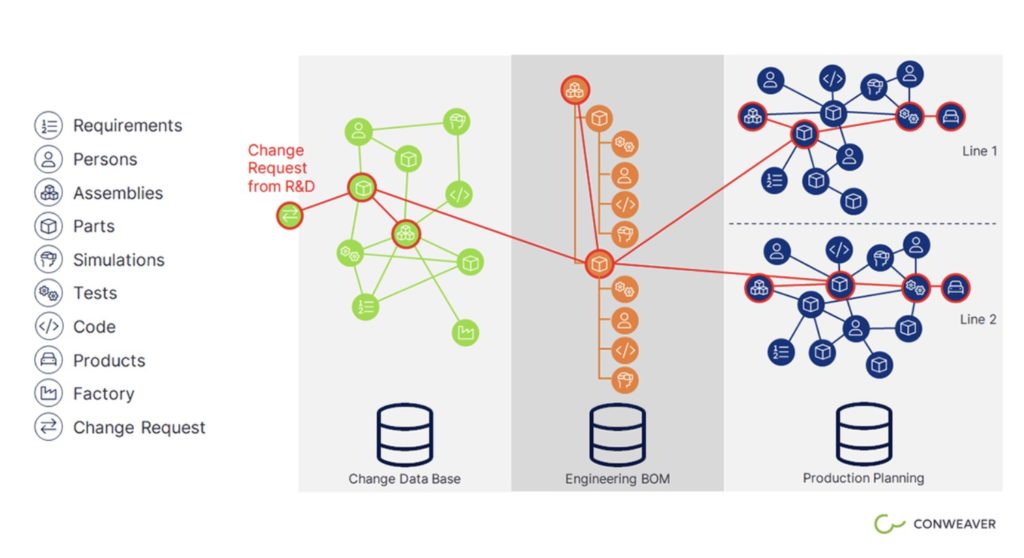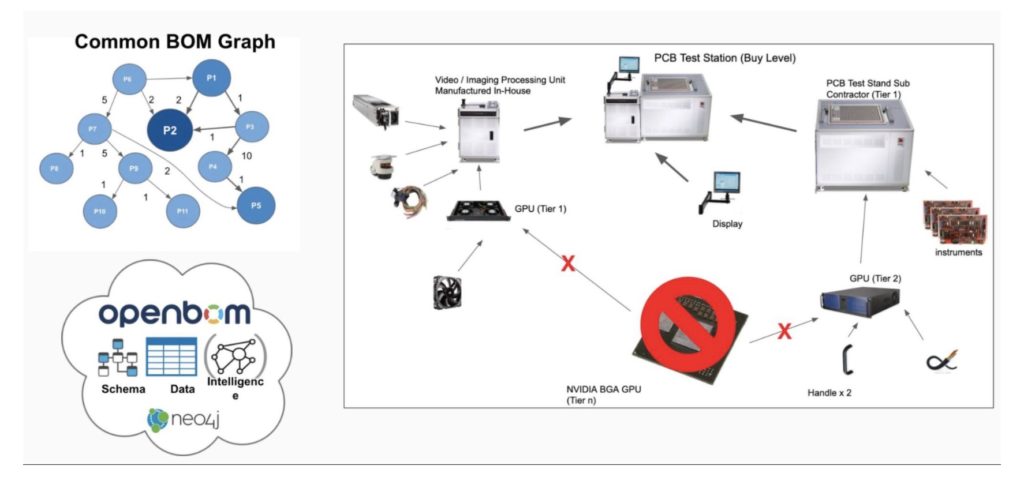
Manufacturing companies are under pressure to deliver innovative products faster and at a lower price. At the same time, manufacturing companies are going through many challenges in the current environment – lack of resources, Covid disruption, supply challenges in the past couple of years, just made the situation even harder for most manufacturing companies. Both lack of order and overwhelming demand created challenges manufacturing companies need to work with. The opportunity for software and technologies is to help manufacturing companies meet these challenges. One of the ways to do so is to embrace the opportunity of data and new industrial platforms.
In my article, yesterday 5 Trends Manufacturing Companies should follow, I have shared my thoughts about platform trends and the opportunity for manufacturing companies.
The foundation of the digital journey is a platform enabling people, data, and processes to be connected. In the PLM world, a platform was always an important element. PLM marketing promoted PLM platforms for many years. However, the challenge is that most of the legacy PLM platforms in fact only served engineers and mostly focused on PDM functions managing files.
Modern platform architecture combines new data management principles, multi-tenant data architecture, real-time collaborative user experience, openness, and a business model to allow everyone to get on the platform. Similar to we engage with platforms today via smartphones streaming music and ordering rideshare. The important element of any platform is a data foundation connecting everyone in a value chain across disciplines and company silos.
In my blog today, I want to dig deeper and speak about technologies and platform capabilities that can turn future PLM platforms into powerful business foundations. These days organizations are turning to data-driven platforms in many businesses. Let’s get more details about how these platforms can function and what advantages modern data management platforms can bring.
Knowledge Graphs and Digital Threads
There is a huge value in connecting pieces of information together for different purposes. PLM solutions were approaching the problem with the connectivity of the data for many years. However, modern Graph Data Management solutions provide a foundation for future development in this field. Thomas Kamps of ConWeaver speaks about examples of building knowledge graphs between multiple data silos in enterprise manufacturing organizations. Here is an interesting chart.

At OpenBOM (disclosure – I’m CEO and co-founder), you can use a graph database and data shared between contractors and suppliers to identify potential bottlenecks in the supply chain and dependencies between manufacturers, contractors, and supply chains.

Collaboration in Multi-Tenant Data Management
Multi-tenancy brings a new dimension to PLM platforms. A multi-tenant data model is capable to hold and share information between multiple companies to support instant data sharing streamline data exchange and work in joint ventures, contractor suppliers, and large distributed product development organizations.
Onshape, one of the most advanced CAD systems supporting seamless collaboration support multiple use cases when Onshape multi-tenant data management allows seamless collaboration. Check the article here
To address today’s challenges of remote work and to ensure improved teamwork and collaboration, product development leaders are seeking to redefine collaboration in three critical areas: (1) Core Design Team – Empowering individual users (designers and engineers) to work more productively together. These core users require the technology to collaborate on the same design in real-time, share ideas and improve product innovation. (2) Extended Internal Team – Connecting the core design team with mission-critical internal company stakeholders. From supply to operations, manufacturing and marketing, improved cloud-based collaboration enables these team members to provide crucial input and approvals. (3) External Partners – Improving information flow with external supply and manufacturing partners to optimize innovation and accelerate time-to-market.
OpenBOM patented BOM collaboration method allows manufacturing companies to streamline the work between engineers, teams, contractors, and suppliers. Check the article and the following passage:
The existing legacy PLM environment is too complex and too costly, cannot deliver an easy model to collaborate, and fails to provide an agile environment for production planning, which is typically handled by a super sophisticated corporate ERP system. For agile new product development, these two existing systems (PLM and ERP) were like a heavyweight that was slowing the NPD process down. This time last year I personally spent 5 hours per week on BOM maintenance. It’s now 10 minutes a week. We see that same improvement with many of the lead engineers on the team. OpenBOM frees the team to do the other things that are important.
Network Effect and New Business Models
Data platforms are becoming a foundation of businesses by facilitating business relations. In the same article by Thomas Kamps, he speaks about how knowledge graph connects multiple data silos allowing to explore data relationships.
OpenBOM platform allows manufacturers not only to share information with contractors and suppliers but also to use it for expanding their business relationships. contractors and manufacturing. OpenBOM connects manufacturers, contractors, and purchasing functions creates valuable business relationships, and allows companies to expand their businesses by connecting contractors with multiple manufacturing companies.
What is my conclusion?
Data is becoming a big business processes facilitator in a modern manufacturing world by connecting companies, contractors, supply chain processes, and customers together. Modern product data management is a foundation of these new data-driven businesses includes multiple disciplines such as knowledge graphs, digital threads, multi-tenant data management, data sharing, and collaboration. It is important that new PLM platforms are not only dedicated to very large enterprises, but also capable to develop a network effect by connecting companies and businesses together, expanding relationships, and providing solutions to the most challenging business problems such as business process optimization, project management, product master data management, data governance, digital transformation, supply chain management, sales channels, customer experience, and many others. Just my thoughts…
Best, Oleg
Disclaimer: I’m co-founder and CEO of OpenBOM developing a digital network-based platform that manages product data and connects manufacturers, construction companies, and their supply chain networks. My opinion can be unintentionally biased.
The post Data-Driven Platforms For Product Lifecycle Management (PLM) | Beyond PLM appeared first on Beyond PLM (Product Lifecycle Management) Blog.



Be the first to post a comment.